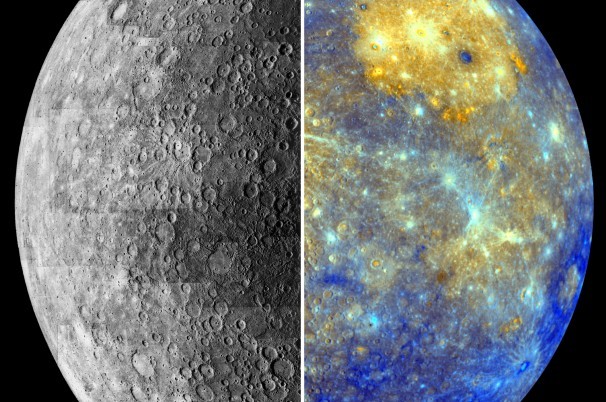There are a billion Earths in this galaxy, roughly speaking. Not a million. A billion. We’re talking 1 billion rocky planets that are approximately the size of the Earth and are orbiting familiar-looking yellow-sunshine stars in the orbital “habitable zone” where water could be liquid at the surface.
That’s a billion planets where human beings, or their genetically modified descendants, as well as their dogs and cats and tomato plants and crepe myrtle trees and ladybugs and earthworms and whatnot, could plausibly live.
[Scientists discover 12 new potential Earth-like planets]
The estimate comes from NASA scientist Natalie Batalha. Let’s go through some background information to see how she got to that number.
As Rachel Feltman reported Thursday, NASA’s Kepler Space Telescope has discovered a bunch of new planets, including one, Kepler 452b, that scientists described as the most Earth-like planet ever found outside our solar system. It’s something like 60 percent bigger in radius than the Earth (the exact size is hard to measure because it’s 1,400 light years away and cannot be directly imaged). But it’s probably rocky, and it’s in the habitable zone of its parent star, which is like our own sun, a G-type “yellow dwarf” star. The parent star is 6 billion years old, roughly (everything’s “roughly,” unfortunately).
[Why NASA’s top scientist is sure that we’ll find signs of alien life in the next decade]
A few important reminders about our cousin Kepler 452b:
No one has seen it. Only Kepler has detected it — it’s too far away and dim to be detected with other instruments so far. So there’s a lot we don’t know about it. We don’t know for sure whether it’s rocky. We don’t know whether it has an atmosphere or water at the surface or anything like that. We’ve seen only the dimming of the starlight from the host star. The pattern of that dimming gives us a good measure of its orbital period (385 days) and, less precisely, its size. We’re not even sure of the exact size of the host star. These objects are very far away.
We also shouldn’t obsess over this one particular planet, nor over any of the intriguing Earth-like planets found by Kepler so far. Kepler is looking at a narrow cone of our galaxy. It’s not an all-sky survey. The main purpose of Kepler was to do a census of a small patch of sky to get an estimate of the abundance of planets. That’s been a huge success: We now know our galaxy is lousy with planets. They’re everywhere. And they come in all sizes.
[Gorgeous new photo shows Pluto with jazzed up color]
During the NASA newser Thursday, I asked whether the latest Kepler data offered any new insight on the abundance of Earth-like planets around sun-like stars (the shorthand for this formulation is “eta-Earth”), and then followed up with an e-mail to NASA. Batalha, an astrophysicist who is the mission scientist for the Kepler telescope, e-mailed her answer:
Previous estimates of eta-Earth suggest that 15-25% of stars host potentially habitable planets. These estimates are based largely on discoveries of planets orbiting the cooler stars called M dwarfs. These new discoveries suggest that the statistics for sun-like stars are roughly in-line with estimates from the cooler M-type stars. So how does that translate to the number of planets in the galaxy? M, K, and G dwarfs comprise about 90% of the stars in the galaxy. Conservatively speaking, if 15% of stars have a planet between 1 and 1.6 times the size of Earth in the Habitable Zone, then you’d expect 15% of 90% of 100 billion stars to have such planets. That’s 14 billion potentially habitable worlds.
M type stars are the most common in the galaxy comprising about 70% of the population of Main Sequence stars. Here’s how the star types break down for the solar neighborhood within 33 light-years:
357 stars total
248 of those are M dwarfs
44 K dwarfs
20 G dwarfs
That means “only” about a billion of the 14 billion I mentioned above are orbiting G stars. Ha!
Thank you, Dr. Batalha! Keep in mind, she is using conservative estimates. So 1 billion may be a little low.
[Breathtaking image shows Pluto with an atmospheric halo]
Before we make plans for colonizing these other Earths, we should pause for a second to note that there are two “Earth-like” planets orbiting our own sun and much, much closer to home than any of these extrasolar planets. Getting Venus in shape for habitability would be a terraforming challenge of the first order. Mars is potentially more congenial, but still an unpleasant place by our standards. Before we colonize Mars, we’ll probably colonize the bottom of our shallow seas. Your scribbler will avoid going into a full rant about people who think there’s a do-over in space for when we ruin our own planet.
Read
NASA estimates 1 billion ‘Earths’ in our galaxy alone – The Washington Post.

